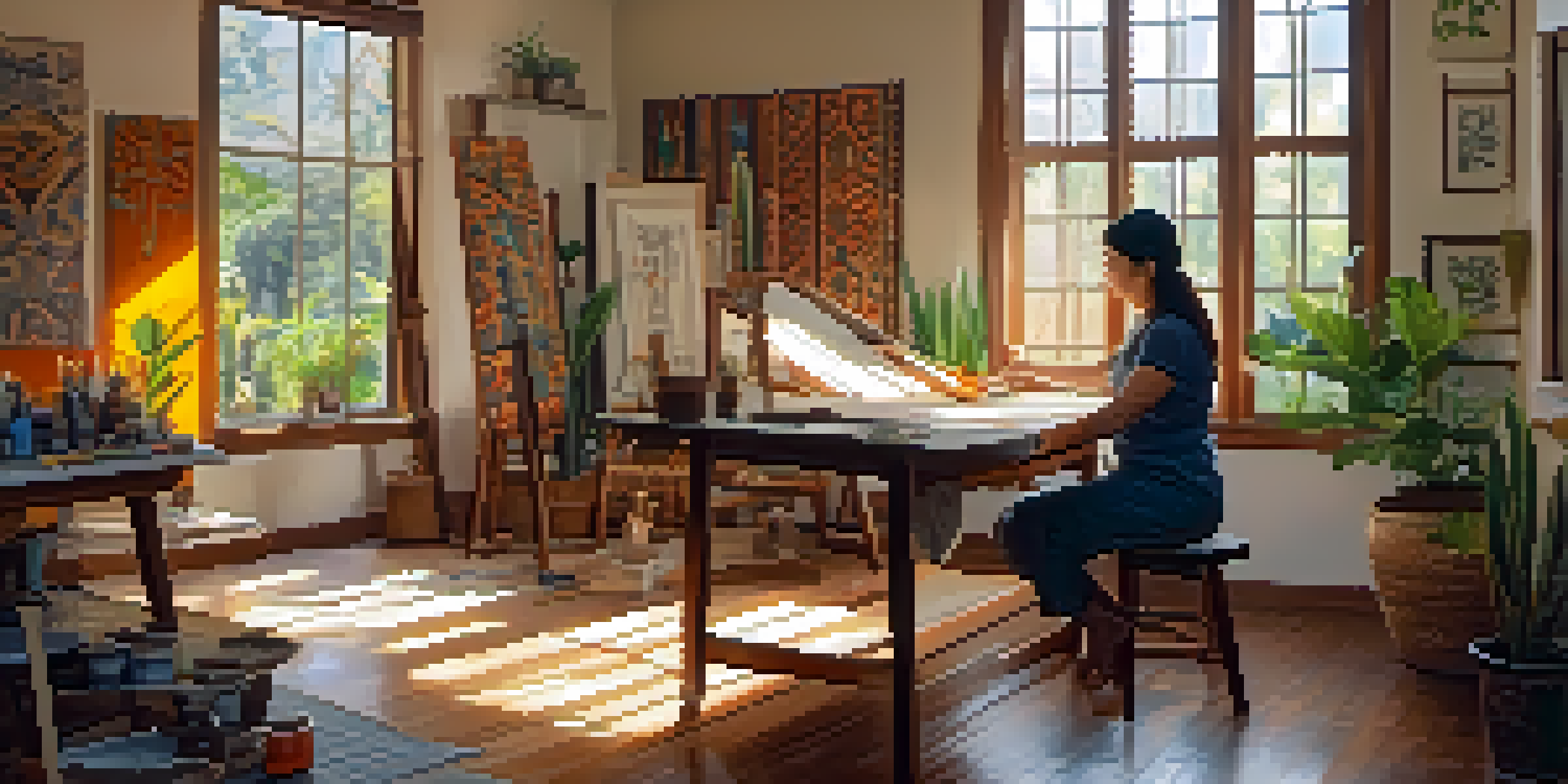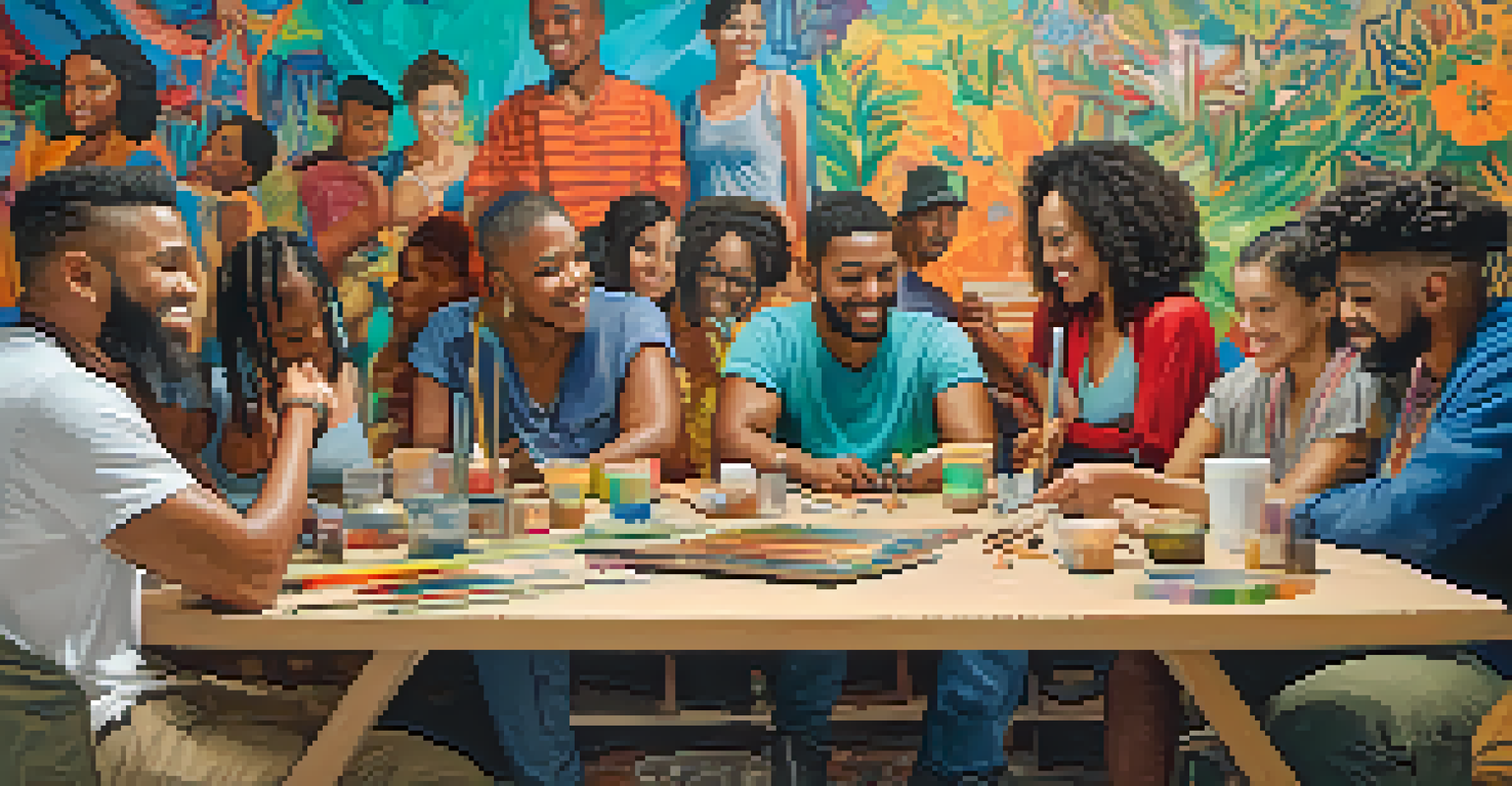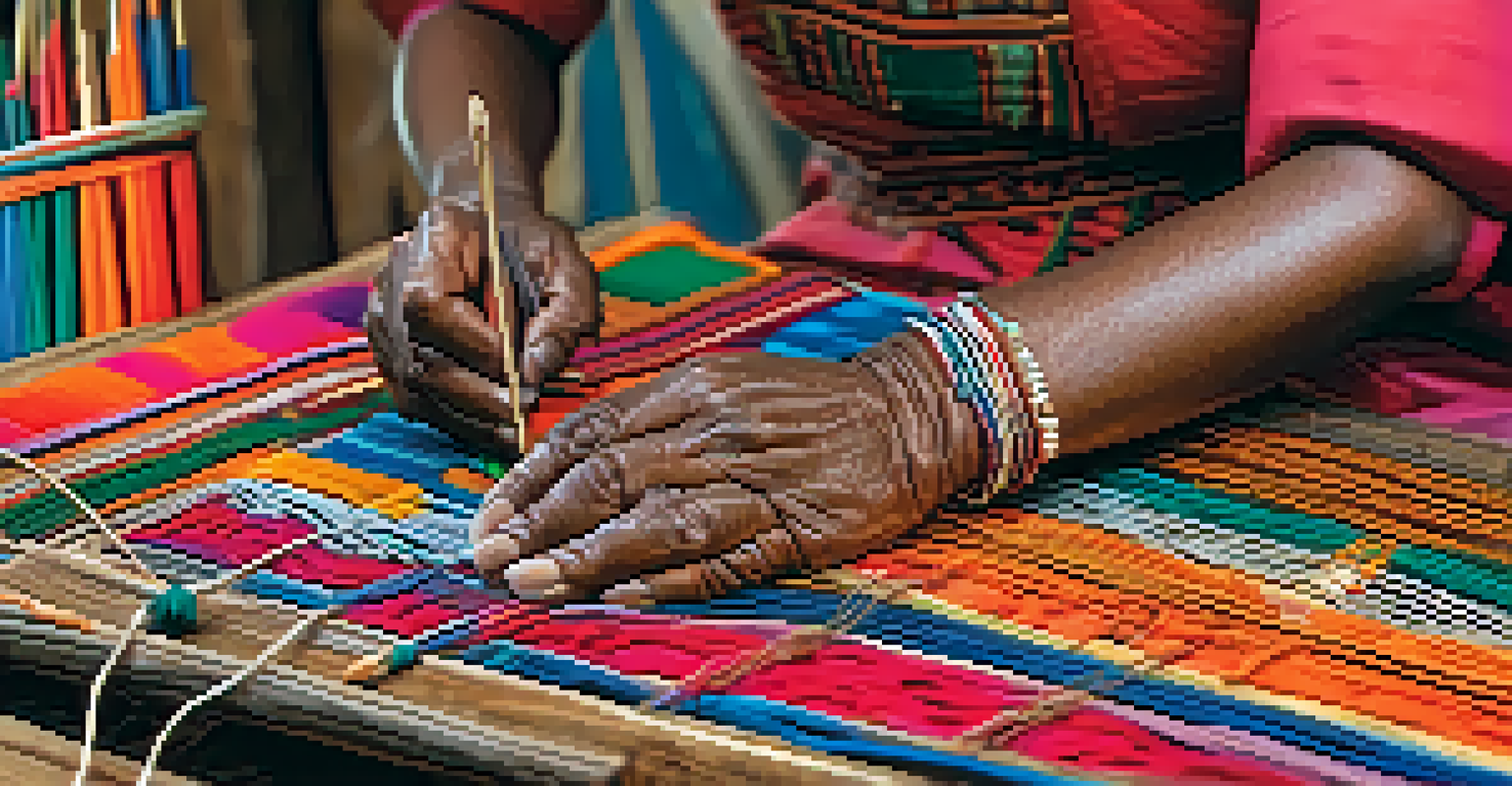Cultural Appropriation: A Global Perspective in Art

Understanding Cultural Appropriation in Art
Cultural appropriation refers to the adoption of elements from one culture by members of another culture, often without permission. In the realm of art, this can manifest in various ways, from fashion to music to visual arts. It raises important questions about ownership, respect, and representation in the creative process.
Cultural appropriation is the act of taking or using elements from a culture without understanding or respecting its significance.
To illustrate, consider an artist who incorporates traditional designs from an indigenous culture into their work without acknowledging its origins. This can lead to a sense of exploitation for the community whose culture is being borrowed. By understanding cultural appropriation, artists can develop a more respectful approach to their influences.
It's essential to differentiate cultural appropriation from cultural appreciation, which involves a deep respect and understanding of another culture. This distinction helps pave the way for meaningful dialogue about the roles artists play in a diverse and interconnected world.
The Fine Line Between Appreciation and Appropriation
Navigating the line between appreciation and appropriation can be challenging for many artists. Appreciation involves recognizing and honoring the cultural significance of the elements borrowed, while appropriation often disregards those roots. This raises critical discussions about intent, context, and impact in artistic expression.

For example, when a contemporary artist uses traditional motifs but engages with the originating community, it reflects appreciation. In contrast, if the same motifs are used in a commercial context without credit, it risks being seen as appropriation. This nuanced understanding is vital for artists to develop a responsible creative practice.
Understanding Cultural Appropriation
Cultural appropriation involves adopting elements from one culture by another, often raising issues of ownership and respect.
Ultimately, artists should ask themselves questions about their work: Am I respecting the culture I’m drawing from? Am I giving credit where it is due? These reflections can help guide their creative journey and foster respect for the cultures they engage with.
Global Perspectives: Appropriation in Different Cultures
Cultural appropriation is not a one-size-fits-all issue; its implications vary across different cultures and contexts. For instance, in Western cultures, borrowing from marginalized communities often leads to debates about exploitation. However, in other regions, cultural exchanges may be viewed more positively, celebrating shared heritage and influences.
Art is a universal language that can bridge cultural divides, but it must be spoken with respect and authenticity.
Consider the global music scene, where genres like reggae or hip-hop have roots in specific cultural experiences yet have been embraced worldwide. The conversation around these genres often reflects a blend of respect and appropriation, depending on how they are presented and who profits from them.
Recognizing these global nuances is crucial in fostering a more inclusive approach to art. Artists must strive to understand the cultural significance behind the elements they wish to use, ensuring their work honors the origin rather than commodifies it.
Historical Context: How Appropriation Has Evolved
Cultural appropriation has a long history, often tied to colonialism and power dynamics. Historically, dominant cultures have appropriated elements from marginalized communities without acknowledgment or respect. This legacy continues to shape the contemporary landscape of art, where artists grapple with the implications of their influences.
For example, during the colonial era, Western artists often depicted non-Western cultures in ways that stripped them of their authenticity. Today, this history prompts a reevaluation of artistic practices, encouraging artists to confront and dismantle these power imbalances in their work.
Navigating Appreciation vs. Appropriation
Artists must distinguish between cultural appreciation, which honors origins, and appropriation, which can exploit them.
By understanding this historical context, artists can better navigate their role in the creative landscape. They can choose to engage with other cultures thoughtfully, ensuring their work contributes positively rather than perpetuating historical wrongs.
The Role of Technology in Cultural Appropriation
In our digital age, technology plays a significant role in how cultures interact and influence one another. Social media has made it easier for artists to share their work and inspirations, often leading to unprecedented cross-cultural collaborations. However, this also raises questions about the ownership of cultural elements in the online space.
For instance, viral trends can quickly spread cultural motifs, sometimes without proper attribution. This phenomenon can dilute the original meaning and significance, leading to a sense of loss for the culture being borrowed from. As a result, artists must be vigilant about how they engage with cultural elements in the digital realm.
Technology can be a double-edged sword, fostering appreciation and connection while also risking appropriation. Artists should leverage technology responsibly, using it as a tool to celebrate cultures while maintaining respect for their origins.
Art as a Medium for Cultural Dialogue
Art can serve as a powerful platform for cultural dialogue, encouraging conversations about identity, heritage, and belonging. When artists engage with cultural elements thoughtfully, they can create works that foster understanding and connection across communities. This approach can transform appropriation into a platform for appreciation and collaboration.
For instance, community-based art projects often invite diverse voices to share their stories and cultural experiences. These initiatives not only celebrate cultural diversity but also encourage artists to reflect on their own practices and the impact of their work.
Ethical Practices in Art Creation
Adopting ethical practices, such as collaborating with cultural communities, fosters respect and authenticity in artistic work.
By using art as a medium for dialogue, artists can challenge stereotypes and promote social change. This perspective shifts the narrative from appropriation to inclusion, allowing for a richer exploration of culture in the artistic landscape.
Moving Towards Ethical Artistic Practices
As conversations about cultural appropriation continue to evolve, artists are increasingly called to adopt ethical practices in their work. This includes conducting thorough research, seeking permission, and collaborating with communities from which they draw inspiration. By prioritizing ethics, artists can contribute positively to the cultural landscape.
For example, engaging with cultural consultants or collaborating with artists from the culture being represented can lead to more authentic and respectful creations. This approach not only enriches the artistic process but also fosters a sense of trust and mutual respect between artists and communities.

Ultimately, moving towards ethical practices in art is about building relationships and understanding. By prioritizing respect and collaboration, artists can create work that honors the cultures they engage with, paving the way for a more inclusive and respectful artistic future.